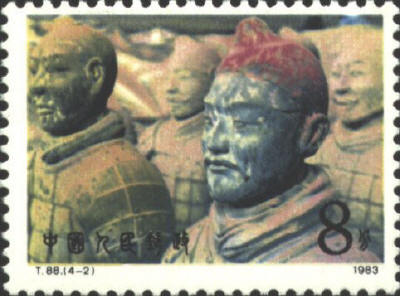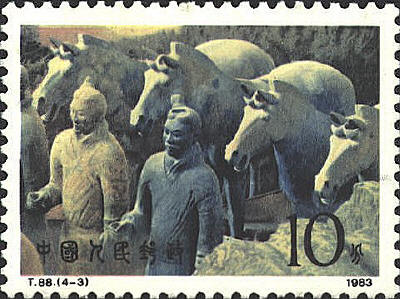|
In 221
b.c. Ying Zheng (259-210
b.c.), the King of Qin,
consolidated the seven Warring States and proclaimed the first empire
of a unified China, the Empire of Ten Thousand Generations. He
took the name Qin Shi Huang Di. He standardized the currency, weights,
measures, and language, established a uniform law code, created a
centralized government, and joined the separate walls erected by
earlier rulers into the 3000 kilometer Great Wall.
His reign lasted for a little over ten years. When he
died he was buried under the artificial mountain, Mount Li, near
present-day Xian in northeast China. As a part of his grave good an
entourage of six to eight thousand terracotta warriors and horses, and
100 chariots was created, possibly to replace those who would
have been killed to accompany the emperor into the next world. This
army was not known until 1974 when peasants digging a well for their
village uncovered a part of the mausoleum.
The terracotta figures have individual characteristics
that distinguish them for each other. There are seven distinct head
shapes with individual facial features. Clothing, rank, posture and
colors give the army a sense of reality.
In 1987 the Qin Shi Huang mausoleum was declared a
World Heritage site. It covers 56.25 square kilometers. The
terracotta warriors are 1.8 to 2 meters tall; the horses are 2 meters
long
In 1983 China issued a set
of four stamps showing the excavation and figures from the mausoleum.





 |
